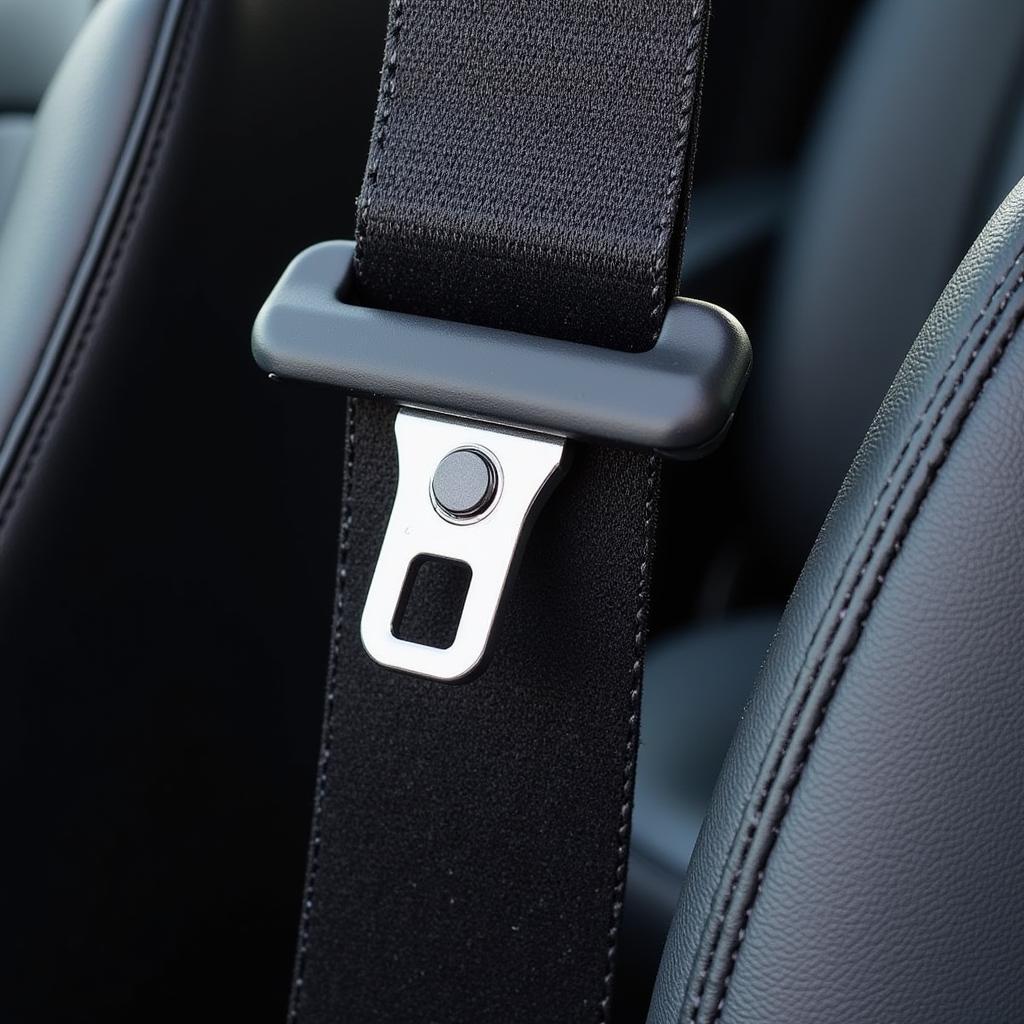If your seat belt warning light and buzzer have suddenly stopped working, you’re not alone. This is a common issue that can range from a simple fix to a more complex electrical problem. Understanding the potential causes and how to troubleshoot them can save you time and money, and most importantly, ensure your safety on the road.
Why is My Seat Belt Warning Light Important?
The seat belt warning light and buzzer are crucial safety features designed to remind you and your passengers to buckle up. This system plays a vital role in reducing injuries and fatalities in car accidents. When functioning correctly, the light illuminates and the buzzer sounds when the ignition is on and the driver’s seat belt isn’t fastened. A malfunctioning system can lead to complacency, increasing the risk of serious injury in a collision.
Common Causes of a Malfunctioning Seat Belt Warning System
Several factors can contribute to a non-functional seat belt warning light and buzzer. These include:
- Faulty Seat Belt Buckle/Sensor: The most common culprit is a damaged or worn-out seat belt buckle or its integrated sensor. This sensor detects whether the buckle is engaged and triggers the warning system.
- Wiring Issues: Damaged or corroded wiring in the seat belt system can interrupt the signal, preventing the light and buzzer from activating.
- Blown Fuse: A blown fuse in the circuit responsible for the seat belt warning system can disable the entire system.
- Diagnostic Trouble Codes (DTCs): Modern vehicles store DTCs that can pinpoint the source of the problem. A diagnostic scan tool can retrieve these codes and guide you towards the faulty component.
- Software Glitches: In some cases, a software glitch in the vehicle’s control module can affect the seat belt warning system. Reprogramming or updating the software might be necessary.
 Seat Belt Buckle and Sensor
Seat Belt Buckle and Sensor
Troubleshooting the Seat Belt Warning Light and Buzzer
Before rushing to a mechanic, you can try a few simple troubleshooting steps:
- Check the Fuse: Locate the fuse box (usually under the dashboard or in the engine compartment) and consult your owner’s manual to identify the fuse related to the seat belt warning system. Inspect the fuse for any signs of damage or a broken filament. Replace the fuse if necessary.
- Inspect the Wiring: Visually inspect the wiring connected to the seat belt buckle for any obvious damage, such as cuts, fraying, or corrosion. If you find any damage, repair or replace the wiring.
- Test the Buckle: Try plugging and unplugging the seat belt buckle several times to see if the warning light and buzzer activate. This can sometimes dislodge any debris or corrosion that might be interfering with the connection.
When to Seek Professional Help
If the basic troubleshooting steps don’t resolve the issue, it’s best to seek professional help. A qualified automotive technician with experience in diagnostics, programming, and remote software installation can accurately diagnose the problem and implement the necessary repairs, whether it involves replacing the buckle, repairing wiring, or addressing software-related issues.
“Often, the problem lies within the buckle itself,” says John Miller, Senior Automotive Diagnostic Technician at Advanced Auto Solutions. “However, more complex issues involving wiring or software require specialized diagnostic equipment and expertise.”
Remote Diagnostics and Software Solutions
Modern vehicles are increasingly reliant on software, and remote diagnostics and software installation are becoming increasingly common. This technology allows technicians to access your vehicle’s systems remotely, diagnose problems, and even install software updates or patches to address specific issues, potentially saving you a trip to the repair shop.
“Remote diagnostics can significantly reduce downtime and provide quicker solutions, especially for software-related problems,” adds Maria Sanchez, Lead Software Engineer at Automotive Software Innovations. “This technology is constantly evolving, offering more efficient and convenient ways to address vehicle issues.”
Conclusion
A malfunctioning seat belt warning light and buzzer is a safety concern that shouldn’t be ignored. While simple troubleshooting steps can sometimes resolve the issue, don’t hesitate to consult a qualified automotive technician if the problem persists. With their expertise in diagnostics, programming, and remote software installation, they can ensure your seat belt warning system is functioning correctly, keeping you and your passengers safe on the road.
FAQ
- What should I do if my seat belt warning light stays on even when I’m buckled? This could indicate a faulty sensor or wiring issue. Consult a mechanic for diagnosis and repair.
- Can I disable the seat belt warning system? While technically possible in some vehicles, it’s strongly discouraged for safety reasons.
- How much does it cost to fix a seat belt warning light problem? The cost varies depending on the cause and can range from a simple fuse replacement to a more expensive buckle or wiring repair.
- Is it safe to drive with a malfunctioning seat belt warning system? While you can still drive, it’s not recommended as you lose a crucial safety reminder.
- Can I fix the seat belt warning light myself? If the problem is a blown fuse, you might be able to replace it yourself. However, for more complex issues, professional help is recommended.
- How can remote diagnostics help with seat belt warning light issues? Remote diagnostics can help identify software-related problems and allow for remote software updates or patches to fix the issue.
- Does my car insurance cover seat belt warning light repairs? It depends on your specific insurance policy and the cause of the problem. Check with your insurance provider for details.
